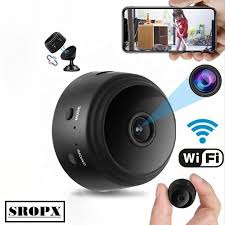Wireless NVR: Revolutionizing Video Surveillance Systems
Wireless Network Video Recorders (NVRs) have emerged as a game-changer in the realm of video surveillance systems, offering flexibility, scalability, and ease of installation like never before. As technology continues to advance, wireless NVRs have become increasingly popular due to their numerous benefits and capabilities.
One of the key advantages of wireless NVRs is their hassle-free installation process. Unlike traditional wired systems that require extensive cabling and infrastructure setup, wireless NVRs eliminate the need for complex wiring, making them ideal for both new installations and retrofitting existing systems. This not only saves time and effort but also reduces installation costs significantly.
Furthermore, wireless NVRs offer unparalleled flexibility in terms of placement and coverage. With no physical limitations imposed by cables, users can strategically position cameras in various locations without being constrained by wiring constraints. This allows for comprehensive surveillance coverage of large areas, both indoors and outdoors.
In addition to flexibility, wireless NVRs provide scalability to accommodate evolving security needs. Users can easily expand their surveillance systems by adding additional cameras or upgrading existing ones without the hassle of rewiring. This scalability feature makes wireless NVRs a future-proof investment that can adapt to changing requirements over time.
Security is another crucial aspect where wireless NVRs excel. These systems offer robust encryption protocols to ensure secure data transmission between cameras and the NVR unit, safeguarding sensitive footage from unauthorized access or tampering. Advanced security features such as password protection, user authentication, and remote access control further enhance the overall security posture of wireless NVR setups.
Moreover, wireless NVRs are known for their high-quality video recording capabilities. Equipped with advanced compression algorithms and high-resolution cameras, these systems deliver crisp and clear footage that captures even the smallest details with exceptional clarity. Whether monitoring a residential property, commercial establishment, or public space, wireless NVRs provide reliable video recording for enhanced situational awareness.
In conclusion, wireless Network Video Recorders (NVRs) represent a significant advancement in video surveillance technology, offering unparalleled flexibility, scalability, security features, and video recording quality. As businesses and individuals seek efficient and effective security solutions, wireless NVR systems continue to redefine the standards of modern surveillance practices.
Understanding Wireless NVRs: Key FAQs on Setup, Integration, and Security Features
- What is a wireless NVR and how does it work?
- What are the advantages of using a wireless NVR for video surveillance?
- How do I set up a wireless NVR system?
- Can a wireless NVR system be integrated with existing wired cameras?
- What security features should I look for in a wireless NVR?
What is a wireless NVR and how does it work?
A wireless Network Video Recorder (NVR) is a central unit in a wireless surveillance system that is responsible for recording and storing video footage from wireless cameras. Unlike traditional DVR systems that require physical cables to connect cameras to the recording unit, a wireless NVR communicates with cameras over Wi-Fi or other wireless protocols. The NVR acts as a hub for managing multiple cameras, receiving video feeds wirelessly, and storing the recorded footage on internal storage or external hard drives. It also provides users with the ability to view live video streams, playback recorded footage, set up motion detection alerts, and remotely access the system via mobile devices or computers. By eliminating the need for cumbersome wiring and offering seamless connectivity, a wireless NVR simplifies the installation process and enhances flexibility in setting up comprehensive video surveillance systems for homes, businesses, or other premises.
What are the advantages of using a wireless NVR for video surveillance?
Using a wireless NVR for video surveillance offers a multitude of advantages that cater to modern security needs. Firstly, the hassle-free installation process of wireless NVR systems eliminates the need for extensive cabling, making them ideal for quick and cost-effective setups. The flexibility provided by wireless NVRs allows users to position cameras strategically without being limited by wiring constraints, ensuring comprehensive coverage of both indoor and outdoor spaces. Additionally, the scalability feature enables easy expansion of surveillance systems by adding more cameras or upgrading existing ones without the complexities of rewiring. Enhanced security measures such as robust encryption protocols and remote access control ensure that sensitive footage is protected from unauthorized access, making wireless NVRs a secure and reliable choice for video surveillance applications.
How do I set up a wireless NVR system?
Setting up a wireless NVR system is a straightforward process that can be easily accomplished by following a few simple steps. First, ensure that all the components of the wireless NVR system, including the NVR unit, wireless cameras, power adapters, and mounting hardware, are unpacked and ready for installation. Next, connect the NVR unit to a power source and to your local network using an Ethernet cable. Then, power on the wireless cameras and pair them with the NVR unit by following the manufacturer’s instructions for syncing devices. Once the cameras are successfully connected to the NVR, you can configure settings such as motion detection, recording schedules, and remote access through a user-friendly interface provided by the NVR software. Finally, position the wireless cameras in desired locations within range of your Wi-Fi network to ensure optimal signal strength and coverage. With these steps completed, your wireless NVR system is now set up and ready to provide reliable video surveillance for your home or business.
Can a wireless NVR system be integrated with existing wired cameras?
One of the frequently asked questions about wireless NVR systems is whether they can be integrated with existing wired cameras. The answer is yes, wireless NVR systems are designed to be compatible with a variety of camera types, including traditional wired cameras. This flexibility allows users to leverage their existing investment in wired cameras while expanding their surveillance capabilities with the convenience and scalability of a wireless NVR system. By integrating existing wired cameras into a wireless NVR setup, users can create a hybrid surveillance solution that combines the best of both worlds – the reliability of wired connections and the flexibility of wireless technology.
What security features should I look for in a wireless NVR?
When considering a wireless NVR system, it is essential to prioritize security features to ensure the protection of your surveillance data. Some key security aspects to look for in a wireless NVR include robust encryption protocols to safeguard data transmission, secure user authentication mechanisms to prevent unauthorized access, password protection for restricting system entry, remote access control for monitoring and managing the system from anywhere, and regular software updates to patch vulnerabilities and enhance overall security. By prioritizing these security features in a wireless NVR, you can establish a reliable and secure surveillance system that effectively protects your premises and assets.




